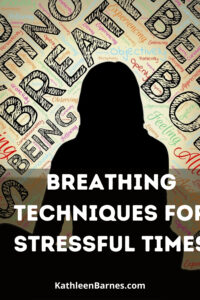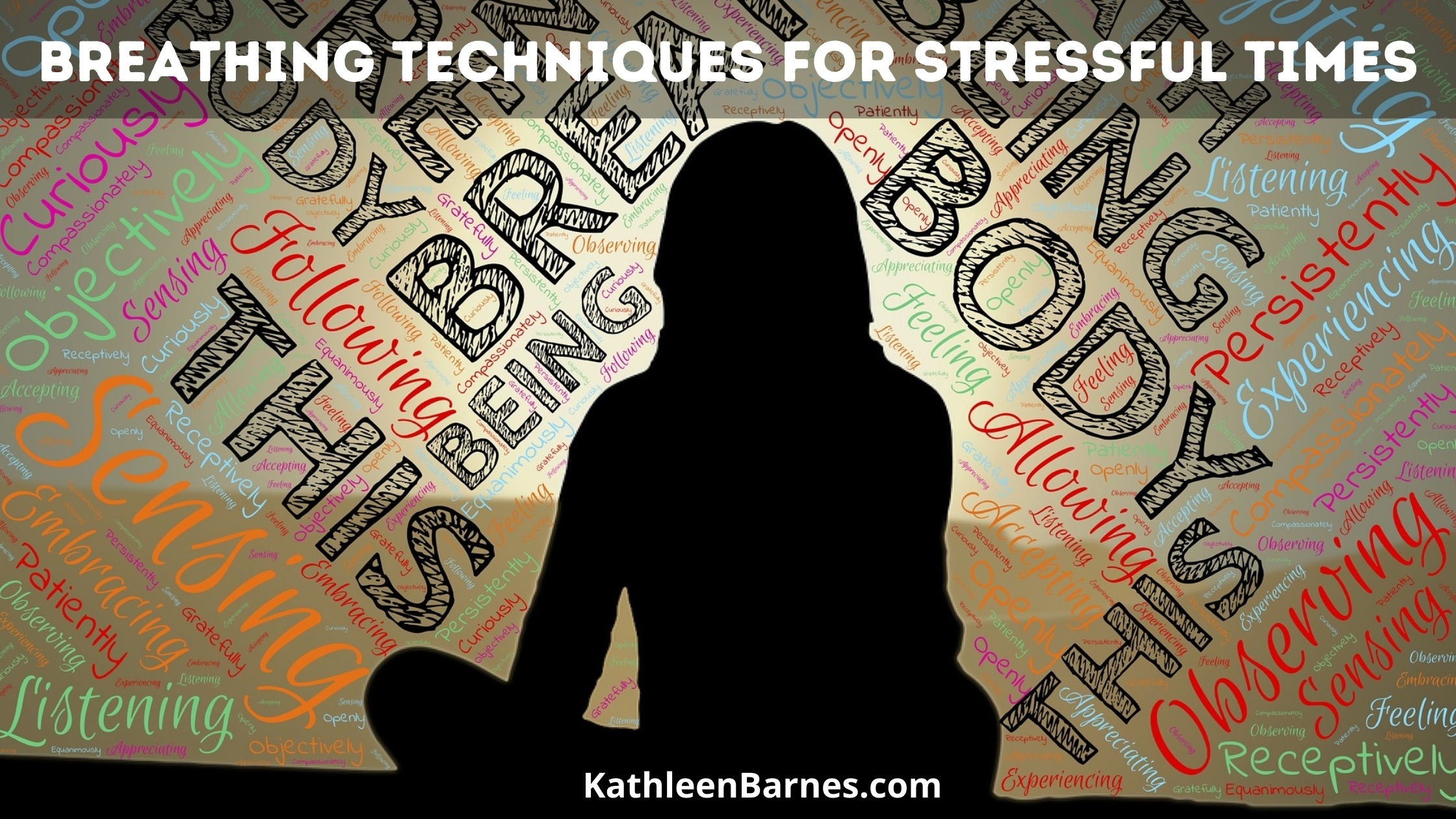 This is an excerpt from my book, 10 Best Ways to Manage Stress. It’s good to remember these skills in stressful times!
This is an excerpt from my book, 10 Best Ways to Manage Stress. It’s good to remember these skills in stressful times!
Breath is life. Quite literally without breath, life ends in just a few minutes.
Some Eastern traditions believe that we are born with a finite numbers of breaths allotted to us, so the more deeply and slowly we breathe, the longer we will live.
There’s something to think about: Imagine you are driving your car and another car drifts over into your lane. You sound your horn and perhaps make a hand gesture or two toward the other driver. It’s a near-miss and there is no accident and no one is injured.
What’s happening to you? Not only are you perhaps uttering a few choice words, your heart is pounding, your senses are hyper-alert – and your breath is shallow and fast.
If you stop your car, sit still and take ten deep breaths, everything changes in short order. Your heart rate returns to normal, the hyper-awareness and energy rush dissipate and everything mellows out.
Of course, what I’m describing here is a typical stress challenge and release. Remembering that we talked about unrelieved and toxic stress and our inability to release it in Chapter 1, you’ll see how powerful those few deep breaths can be to help you release the stress.
I’ll start with the most basic deep breathing. This may be all you need, but there are other types of breath you can employ for different levels of stress.
Basic deep breathing
Let’s start with some basic physiology. I promise it will be painless.
Your lungs are the size of two footballs. They can hold a large volume of air, yet most of us use only about the upper one-third of our lung capacity. The diaphragm is a membrane that stretches across your torso beneath your lungs and, when your belly is relaxed the diaphragm allows your lungs to inflate fully.
It is natural to relax the belly for maximum lung capacity when you inhale and to contract the belly when you exhale. All of us breathe this way when we are asleep. Children and animals breathe this way. Somewhere along the line, most of us somehow got switched. I attribute it to the old Mom admonition to “Stand up straight, put your shoulders back and suck your belly in.” This time, Mom was wrong.
Deep belly breathing fills your body with oxygen and help expel waste products most efficiently through the carbon dioxide exchange in the lungs.
To practice basic deep breathing, sit comfortably with your spine straight, shoulders relaxed. At the beginning, it helps to put your hands on your belly so you can get a better sense of its movement.
Now take in a deep slow breath through your nose. Feel your belly push slightly against your hands as you fill your lungs completely. As soon as your lungs are as full as you can comfortably inhale, immediately begin to exhale, again, slowly and comfortably, slightly contracting your abdominal muscles to help expel all the air.
Continue breathing this way for several minutes. If this type of breathing is new to you, you may begin to feel a little light-headed. That is simply because your system is not accustomed to so much oxygen. The light-headed feeling will pass. If it is too uncomfortable, keep your breath slightly more shallow until your body adjusts.
Here are several other breathing techniques that will help you relieve stress:
- Ocean breath: Yogis call this breath “ujjaya.” It’s the basic breathing technique with an added element: You make the sound of the ocean in the base of your throat. Imagine you are breathing in at that point at the base of your throat. This results in a slight vibration there that sounds almost like you are beginning to snore. When your inhalation is complete, exhale using the same sound, contracting your abdominal muscles are you squeeze out the breath. The added sounds increase your relaxation and give you a focal point for some meditation techniques, as we will discuss in Chapter 5.
- Holding breath: The holding breath is an extension of the basic breath with the added element of holding briefly after the inhalation. Dr. Andrew Weil teaches a balancing breath that I love:Inhale for the count of eight.
Hold for the count of seven.
Exhale for the count of eight.
Repeat four times.Very simple and very effective for stress relief!
- Breathe into the pain: You have no doubt discovered that stress can result in physical pain, most often from tight muscles. Using the basic breath, mentally focus the breath into the sore area. For instance, if your neck is sore, mentally send the breath and the relief to your neck to relax those tight muscles. Ditto for a shoulder, back, even belly pain.
- Cooling breath: If you’re feeling hot (physically or emotionally), the cooling breath will cool you off quickly. Being mindful of the basic breathing technique, breathe in normally and exhale through pursed lips as though you are blowing gently through a straw. Repeat 8 to 10 times for a fast cool-off.
- Emergency breath: OK, so you’ve avoided the car accident, the confrontation with your spouse of your child’s insolence, but you just can’t seem to let go of it. You’re replaying the situation over and over in your head. Start with the basic breath for a minute or two and then add the emergency bailout:* The best position is sitting on your heels on the floor with your hands on the floor in front of you. If you can’t do that, sit in a chair, feet flat on the floor with your hand on the edge of a sturdy table in front of you.* Straightening your arms, take a vigorous breath in through your nose.
* Immediately exhale vigorously through your nose as you bend your arms.
* Do 8 to 10 breaths this way. You can repeat for a second round if you wish.
This is a powerful and intense technique. It will almost certainly make you feel light-headed, so take it easy and be sure not to get up too quickly when you finish.







